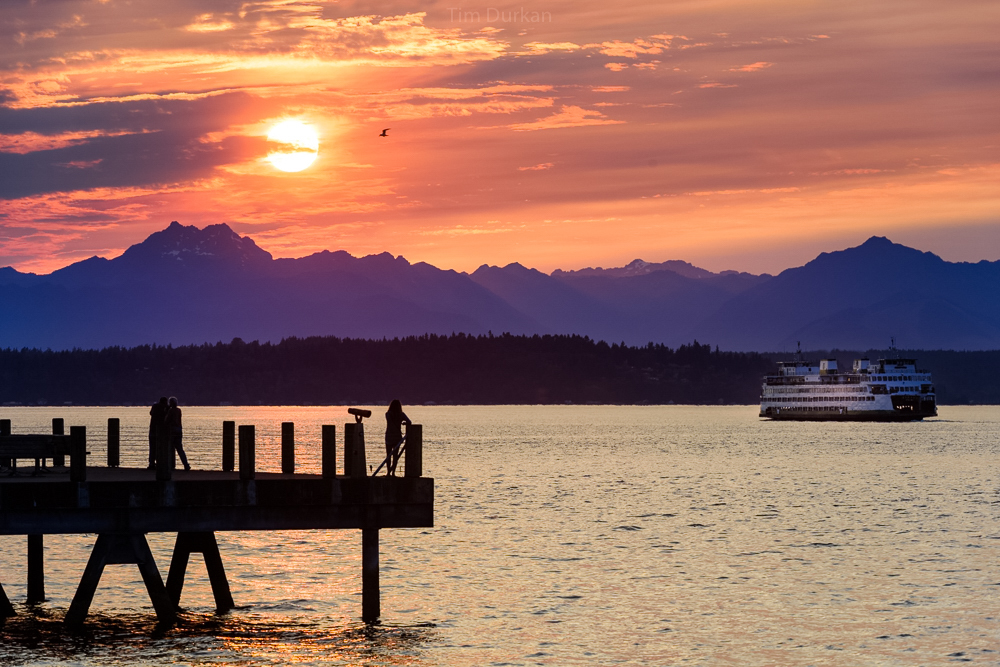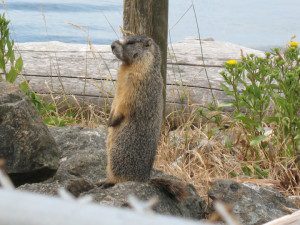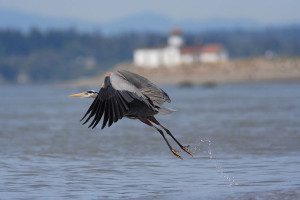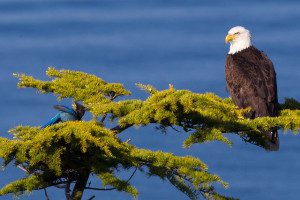
Just ask the beavers at Golden Gardens. They’ll tell you. Or consult the barn owls in Magnuson Park. They know. But now it’s really official, the National Wildlife Federation (NWF) has just announced that Seattle is the sixth friendliest city in that nation for wildlife.
To kick off the 77th annual National Wildlife Week, NWF announced its “Top Ten Cities for Wildlife” in the United States. The scoring was based on three important criteria – the percentage of parkland in each city, citizen action to create wildlife habitat and school adoption of outdoor learning in wildlife gardens.
It’s no surprise Seattle made the cut. Seattle has more than 400 parks and open areas and 6,200+ acres of parkland.
Seattle Parks and Recreation has played a major role in preserving wildlife habitat and educating citizens about interacting with urban wildlife neighbors.
- In Magnuson Park, Discovery Park, Carkeek Park, Seward Park, Camp Long, and many other naturally maintained areas, nature educators lead nature camps, wetland walks and garden parties for community members, scout troops and school students.
- Landscapes in parks are increasingly designed to be more bird and pollinator-friendly. These landscapes now provide nesting sites, food, shelter and informational signs about bird and plants species.
- In 2011, Seattle Parks worked with Seattle City Light, the Washington Department of Fish and Wildlife, Burlington Northern Railroad staff and the U.S. Coast Guard to build replacement nest sites for ospreys in Commodore Park. The birds’ old nest had to be dismantled to repair a communications tower. Staff from the three agencies worked together on siting the new nest, getting permits, fabricating a nest platform and installing a 70-foot pole and platform. Two ospreys showed up at the platform the month after it was built, and two babies were born that year. Birds continue to return each spring.
- In 2012, the largest urban nesting colony of Great Blue Herons in Washington, located in Kiwanis Ravine Natural Area and Commodore Park, was designated as the City’s first Urban Wildlife Sanctuary.
- When beavers recently took residence in Golden Gardens Park and Magnuson Park, Seattle Parks and Recreation staff created new ways to help mitigate pond overflow in the park without destroying their dams.
- In 2008 coyote sightings in Discovery Park sparked debate among neighbors about whether the animal should be killed, relocated, or left alone. Seattle Parks staff came up with a solution that allowed the coyote and community to co-exist — not only this park, but also in many parklands throughout the City. Seattle Parks staff held an open house to talk to residents in all neighborhoods about ways to live peacefully with urban wildlife. The department invited representatives from the Progressive Animal Welfare Society, Woodland Park Zoo, Wolf Haven International, the state Department of Fish and Wildlife and the Seattle Animal Shelter to participate and share tips.
- Seattle Parks, together with other City departments, community and non-profit partners in the Green Seattle Partnership have brought 1,040 acres of wetland and urban forest parkland into active restoration as sustainable, quality, diverse habitat for urban wildlife.
- Seattle Parks staff and community wildlife advocates in several parks are working collaboratively to anticipate and resolve conflicts between maintenance practices and urban wildlife habitat impacts.
- In 2014, the City of Seattle stopped using neonicotinoid insecticides and promoted the installation of pollinator habitat to help support native pollinators and honey bees.
Seattle Parks and Recreation is proud to have played a role in making the city more attractive to wildlife and staff will continue to work with communities to sustain these efforts.
Visit one of our 6,200 acres of parkland, and if you encounter wildlife, snap a picture and share it with us on Facebook or Twitter.



